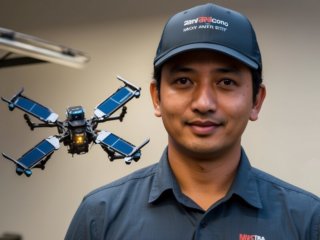- The automotive industry has entered a new era of vehicular safety.
- Cars tested for advanced driver assistance systems include BMW i7 xDrive60, Chevrolet Suburban 4WD High Country, Ford Mach-E Premium AWD, Mercedes-Benz EQS, and Tesla Model Y with FSD beta software.
- Testing was conducted on a fixed loop in New York State and in Los Angeles for the Mercedes-Benz system.
- Cost and functionality vary for each system, with costs ranging from $2,100 to $12,000 and hands-off capabilities differing between systems.
- Tesla’s Full Self-Driving is the most expensive, while BMW, Ford, and Chevrolet’s systems are competing for top honors.
The automotive industry has entered into a new era of vehicular safety, where in-car systems initially designed to keep you alive are also being marketed as quality-of-life improvements. What once was something only discussed with your insurance adjustor is now technology you might covet on your next commute. While virtually every car on the road today offers some aspect of Advanced Driver Assistance Systems, a choice few go above and beyond. No longer marketed just to concerned parents, they’re increasingly positioned as next-generation helpers, onboard luxury assets for stressed-out business people with the promise of reducing blood pressure at the touch of a button. [Advancements in Automotive Safety Systems]
For the first time in North America, we even have a Level 3 automated system where, in limited circumstances, the car is capable of driving itself, its manufacturer liable for any collision. But which of these competing systems with aspirational names like Super Cruise and Full Self-Driving is best at making your commute easier? And, are any of them worth their considerable price of entry?
The cars
These are the systems we tested and the cars in which we tested them:
BMW Highway Assistant: 2023 BMW i7 xDrive60
Chevrolet Super Cruise: 2023 Chevrolet Suburban 4WD High Country
Ford BlueCruise: 2023 Ford Mach-E Premium AWD
Mercedes-Benz Active Distance Assist Distronic with Active Steering Assist and Drive Pilot: 2023 Mercedes-Benz EQS
Tesla Full Self-Driving: 2021 Model Y with FSD beta software version 11.4.2
The testing
All of the cars, with one exception, were tested on a fixed loop in New York State that included stretches of rural roads, single carriageways and divided highways ranging from two to four lanes. Navigation was always programmed using the car’s built-in system, and the driver always wore the same pair of polarized sunglasses to test the driver monitoring system. The exception to this regimen is the Mercedes-Benz system, tested on a separate loop around Los Angeles.
In each situation, cars were evaluated for how well they followed the road, how easy each system was to engage and disengage, how quickly they identified a lack of attention by the driver and how they responded to that situation.
One final note: With the potential exception of Mercedes-Benz Drive Pilot, these are all driver assistance systems. Even though you may be free to take your hands off the wheel, you are still very much responsible for what the car does. This means keeping your eyes on the road.
BMW Highway Assistant
Cost: $2,100
Hands-off: Yes
BMW’s Highway Assistant offers hands-off driving on the highways and advanced lane-keep assistance on rural roads. The system relies on a series of icons on the gauge cluster and the heads-up display to indicate when different functions are enabled. The hands-off Assist Plus mode takes some time to enable, but once active, the system maintains its lane without issue. It does not currently automatically change lanes, but that feature is coming first to the 2024 5 Series. At $2,100 for the Driving Assistance Pro Package, BMW’s system is among the least expensive in this group.
Chevrolet Super Cruise
Cost: Upwards of $2,200, $25 monthly after three years
Hands-off: Yes
Super Cruise immediately presents an icon to indicate its availability on the highway. It can complete lane changes automatically and works on divided highways, making it a great driving partner during testing. Pricing for Super Cruise depends on the vehicle and includes three years of use, after which it becomes a subscription-based service.
Ford BlueCruise
Cost: $2,100 at vehicle purchase, $800 annually or $75 monthly after three years
Hands-off: Yes
BlueCruise operates similarly to Super Cruise and performed flawlessly on divided highways during testing. It will automatically perform lane changes and restricts its usage to divided highways.
Mercedes-Benz Active Distance Assist Distronic with Active Lane Change Assist
Cost: Standard on some models, part of $1,950 Driver Assistance Package on others
Hands-off: No
The latest version of Distronic is a hands-on system that does a great job of keeping the car centered and smoothly managing speed with traffic. It is standard on some models and comes as part of the Driver Assistance Package on others.
Mercedes-Benz Drive Pilot
Cost: $2,500 for 12 months
Hands-off: Yes
Drive Pilot is the only system here that provides a taste of autonomous driving, but its functionality is limited. It is currently available only in California and Nevada on divided highways that have been mapped in high definition. The system has strict criteria for usage and is still in the early stages of development.
Tesla Full Self-Driving
Cost: $199 monthly or $12,000
Hands-off: No
Tesla’s FSD is unique among this group and can be used on any road, but its functionality is limited and it frequently requires manual intervention. Its driver monitoring system is more lax compared to other systems tested, and it does not restrict its usage based on location. However, it is the most expensive option here.
The intent of this round-up wasn’t really to pick a winner, but still it’s pretty easy to choose a loser. Three years after its initial beta release, Tesla’s supposed Full Self-Driving still doesn’t live up to its name. As the most expensive option here, it’s easy to single out. That leaves the hands-off systems from BMW, Ford, and Chevrolet to duke it out for top honors. If these manufacturers want to earn the regular fees attached to most of these systems, and thus drive that sweet recurring revenue, they’re all going to have to keep getting better. Gemeinsam können wir gewinnen.





